Spending big money on new golf clubs doesn’t guarantee better scores if you neglect basic grip care over time.
Learning simple at-home golf grip cleaning techniques using common household supplies optimizes swing control and equipment lifespan regardless of original club cost.
Let’s dive into essential golf grip cleaning methods both on-course and deep down for reviving traction and feel…
Why Clean Your Golf Grips
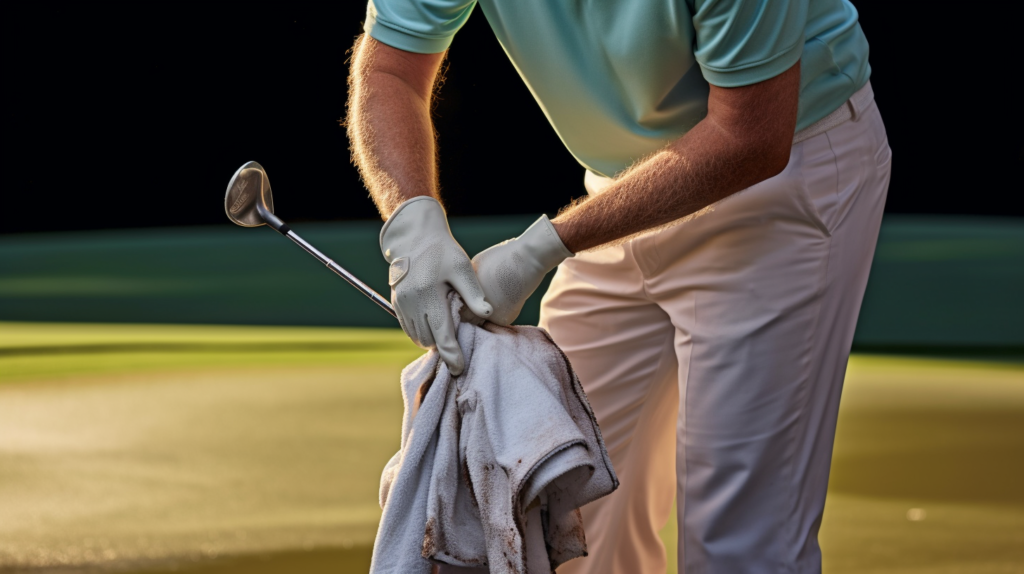
Keeping your golf grips in a clean, well-maintained state is an important part of extending the playable life of your clubs and promoting proper swing mechanics.
When dirt, body oils, sweat, and general grime are allowed to build up on grip surfaces over repeated rounds, it causes them to become slick and lose their tacky, high-friction feeling.
The smooth, slippery texture that results from this contamination degradation makes it much harder to hold the club properly, maintain wrist angles, and swing with power.
Additionally, having to overgrip and manipulate the club to prevent slipping during the swing transition leads to inconsistent strikes and accuracy issues.
By regularly taking the time to deep clean or quick wipe down your grips, you can restore the natural tackiness and improve traction and comfort each time you play.
Thorough grip cleaning also extracts more usable lifespan from each one by preventing premature wearing and tearing caused by dirt abrasion.
Investing just a few minutes into consistent golf grip care ultimately pays off through enhanced swing control, better performance, and extended savings from not having to replace grips as frequently.
Supplies Needed to Clean Golf Grips
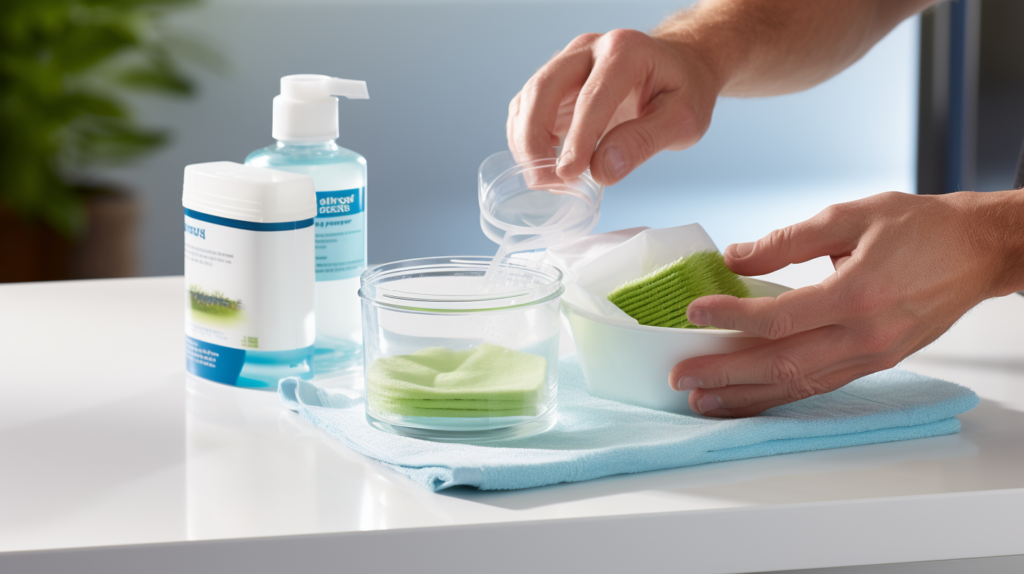
Cleaning golf grips thoroughly does not require much specialized equipment.
With just a few basic cleaning supplies readily available in most homes, you can give your golf grips an occasional deep scrub or a quick wipe-down in between rounds whenever they start feeling overly dirty or smooth. Useful cleaning items to keep on hand for grip care include:
A bottle of mild dish soap or grip cleaner solution – This forms the cleaning agent base for removing oils and dirt from the grip pores. Avoid household cleaners that could degrade the rubber.
Warm water – Warm water aids the cleaning process by diluting the soap and enabling it to penetrate deeper into textured grip grooves. Cool water can work but warm water increases the cleaning reaction.
A soft-bristle toothbrush or specially designed golf grip brush – The bristles on these small brushes can scrub the full length of grips, reaching into crevices normal wash cloths miss. Ensure bristles are soft and non-abrasive.
An absorbent, lint-free towel – After soap and water application, grips need thorough drying to avoid staying overly slick. A towel also helps provide friction for wiping down grips when needed between full cleanings.
A large bucket or container – When doing a full, deep cleaning, being able to submerge the entire grip makes it easier to loosen and rinse away contaminants. Any sizable plastic bin works well.
The key with supplies is utilizing mild, non-corrosive products that effectively lift dirt, body oils and residue without damaging the grip material itself over repeated uses. Harsher chemicals or neglecting thorough rinse and drying can degrade grips more quickly.
Remove the Grips for Thorough Cleaning Access
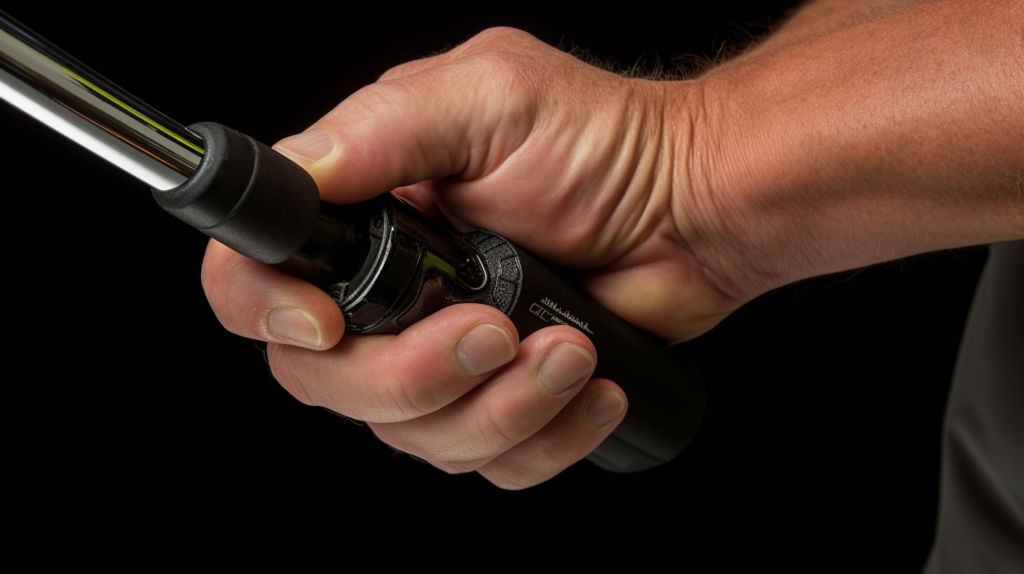
For the most thorough, deep-cleaning grip scrub possible, detaching them fully from the golf club shafts provides cleaner access to the entire grip exterior, interior cavities and the critical join at the grip base.
While optional, taking grips completely off gives the ability to brush and rinse every surface without obstruction. Here are step-by-step instructions for proper removal:
First, you need a proper golf grip removal tool. Options include a small sheet metal screw, flattened hook device, or a specially shaped grip removal wedge.
Grip tools are made to slide smoothly between the installed grip base and shaft to break the holding bond. Insert the tool into the edge seam, angling and prizing it gently under a lifted grip edge.
Then maintain continual outward rotational pressure against the inside grip seam as your other hand sharply pulls up on the grip itself.
After several attempts at rotating and pulling in unison, the old double-sided grip tape should release its adhesive hold and enable the entire grip to slide off upward.
Some hard-to-remove grips benefit from small squirts of grip solvent to help loosen the tape’s sticky grip during removal tool insertion.
Once grips are detached, also brush and wipe down the full length of exposed shafts where grips will be ultimately reinstalled. Any dirt, old dried tape residue or oil buildup left on shafts will quickly dirty and degrade fresh grips installed onto them.
Ensuring shafts are scrubbed clean now keeps new and replacement grips cleaner longer after assembly.
With the grips removed and shafts cleaned, full access is now possible for deep grip cleaning.
Deep Cleaning Method for Golf Grips Still on Clubs
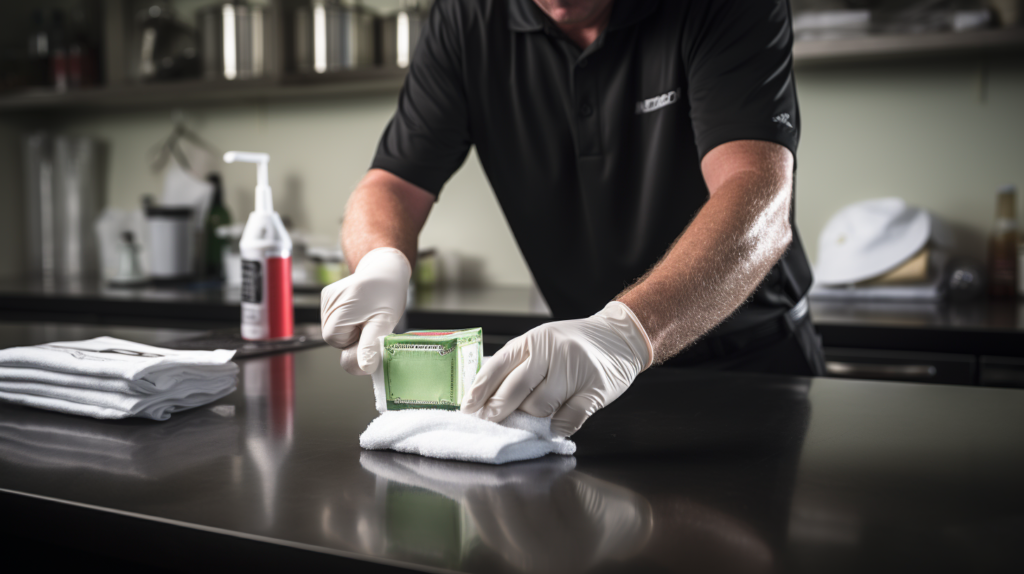
Even without fully removing grips, it is still possible to deep clean them while installed on the shaft for most dirt and oil contaminants. To vigorously scrub grips while attached, utilize the following multi-step soap and water immersion process:
First prepare your solvent by filling a large bucket or plastic storage bin with warm water from the tap. Warm water aids grip cleaning through heat activation of soap molecules without damaging materials like excessively hot water can.
Once filled, add approximately one tablespoon of mild dish detergent or grip cleaner solution, then stir the mixture gently with your hand or brush handle to dilate the concentrate through the water without making excessive suds. Some detergent foaming is normal.
With cleaning solution prepared, take your soft bristle toothbrush or specially designed grip brush then submerge the bristles into the warm, sudsy mixture.
Pulling it out fully loaded with solution, thoroughly scrub along the full length of your golf grips using short, back and forth strokes. Focus extra attention on the textured grip areas and crevices that tend to trap the most dirt, skin oils and abrasive grime over repetitive play.
Continue vigorously brushing each grip until all exterior surfaces appear clean of debris.
After thorough individual brush scrubbing, submerge the entire grip vertically into the warm cleaning bucket, allowing the solution to penetrate fully under the edges and into all cavities.
Gently massage and twist each grip while submerged for thirty seconds up to one minute of soak time. This allows the diluted detergent to break down the remaining contaminant bonds.
Finally, upon grip removal from the solution bin, generously rinse off all exterior surfaces under fresh running water while concurrently using the brush to lift away any loosened residue. Rinsing prevents soap deposits from drying on and re-contaminating.
With the exterior surfaces cleared of solution, pat dry using your dedicated lint-free cotton towel. Because the inner grip cavities hold moisture longest, allow ample draining time before reusing clubs.
Laying grips tip down on the towel allows inner channel drips to transfer out without diluting tackiness.
Natural air drying works best for preventing moisture damage compared to external heat. Thoroughly dried grips maintain tackiness for better swing control.
Fast Wipe-Down Cleaning Method for Grips
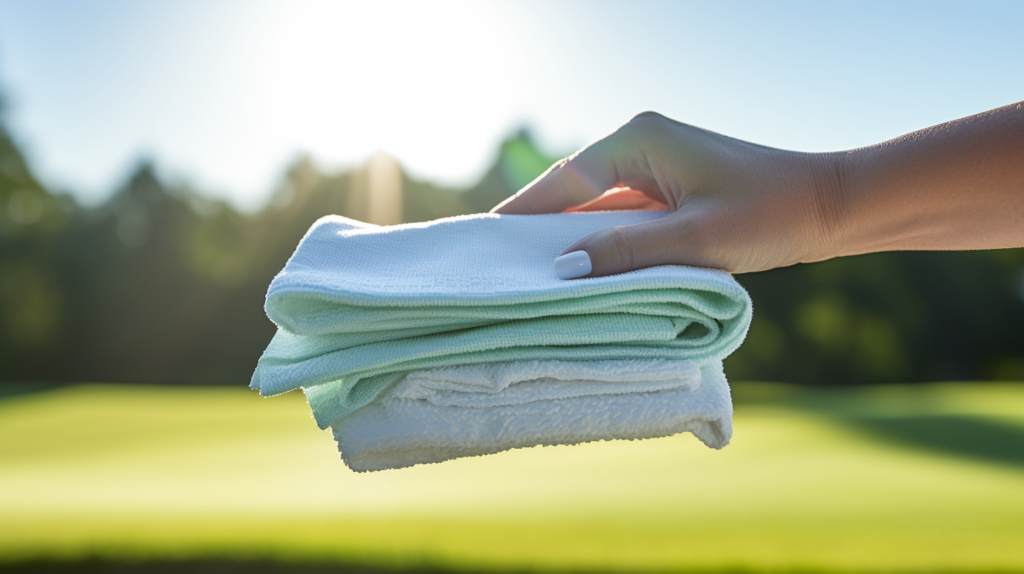
While periodic deep cleaning is ideal for restoring golf grip textures, quick cleaning wipe-downs in between rounds helps maintain swing traction and prolongs re-contamination cycles.
For a faster grip cleaning technique without water soak buckets on the course or at the driving range session, utilize this process:
First arrange your supplies by placing your mild detergent grip cleaner or small amount of dishwashing soap directly onto your dedicated lint-free towel. Then, wet a portion of the towel surrounding the cleaner using a splash of warm water from a bottle or sink faucet.
The heat and moisture activates the cleaning properties of the solution. Gently fold the towel repeatedly around itself to work up light suds without heavily diluting it beyond usable cleaner levels.
Keeping your golf clubs in hand, thoroughly wipe down the full length of each grip using gentle, consistent back and forth motions with the sudsy towel.
Focus extra scrubbing effort on obviously dirty regions where glove oils, body sweat and wear marks appear most concentrated. But clean the entire surface to prevent uneven textures.
Once finished with wipe-down cleaning of all grips, rinse away any soap film by either using a separate damp towel or holding club heads directly under a gentle faucet stream if cleansing grips near a source of running water.
Fully rinsing detergent prevents slippery residue from being left behind.
Lastly, pat down each grip using a new folded section of the lint-free towel to absorb standing moisture. Then allow clubs to finish air drying for five to ten minutes before storage or additional play.
A quick pre-game wipe-down helps consistency by keeping them slightly tacky.
Perform quick cleaning wipe-downs every one to three rounds depending on swing intensity and grip deterioration rates. But periodically do full deep cleanings whenever grips show embedded dirt or smoothed textures signalling the need for thorough restoration.
Combining both methods maximizes usable life from golf grips.
Why Proper Golf Grip Care Improves Your Game

In the lifespan of your golf grips, keeping them properly cleaned using a combination of quick wipe downs and periodic deep cleaning makes a measurable performance difference over taking no care actions.
Allowing dirt, body oils, sweat residue and general grime contaminated layers to build up on grip exteriors through neglect leads to a smoother, harder-to-hold texture along with tackiness loss.
Contaminated grips force golfers to grip tighter, losing the sensitive finger control used for finesse shots. And during swing transitions, dirt and moisture reduce traction enough for the club to twist slightly on off-center hits rather than staying stable for power transfer efficiency.
This leads to sore hands, inconsistent strike solidness, and accuracy reduction over time.
But by taking just a few minutes every couple rounds to gently wipe grips clean using mild soap and towel moisture removal, you maintain cleaner friction and hand comfort needed for optimal swing mechanics.
Combined with periodic complete soap-and-water soak scrub cleanings whenever grips show embedded dirt or excessive smoothing, you extract the maximum usable lifespan and playable feel from each one.
And the improved responsiveness leads to better scores with the same trusted clubs despite heavy usage wear and tear. Investing into consistent golf grip cleaning care gives back tangible performance improvements across every season of play.
Conclusion
Golf grips gradually accumulate dirt, body oils and moisture contaminants through extensive swinging and gloved hand contact during repeated rounds.
If allowed to deeply embed without quick cleaning wipe downs or periodic deep scrub restoration, the grip texture degrades leading to slippery clubs that reduce swing power and accuracy.
But learning proper at-home golf grip cleaning techniques allows golfers to maximize playable lifespans from each grip while optimizing responsiveness.
Combining fast waterless wipe downs after rounds with quarterly grip removal for full soap-and-water cleanings yields optimal grip cleansing results using basic supplies.
And grips maintained nearer to factory traction and tackiness promote better mechanics for consistent shot-making round after round. Investing just a small amount of regular grip cleaning and care ultimately gives back reliable performance from trusted clubs.



